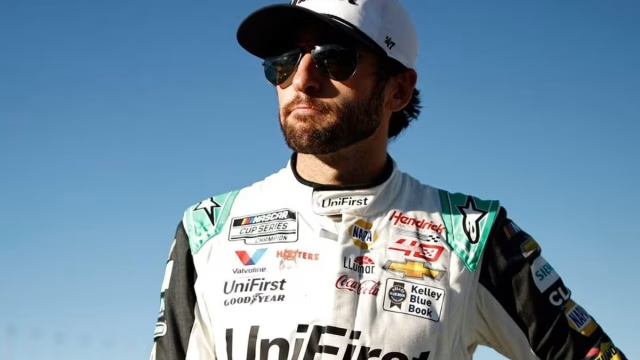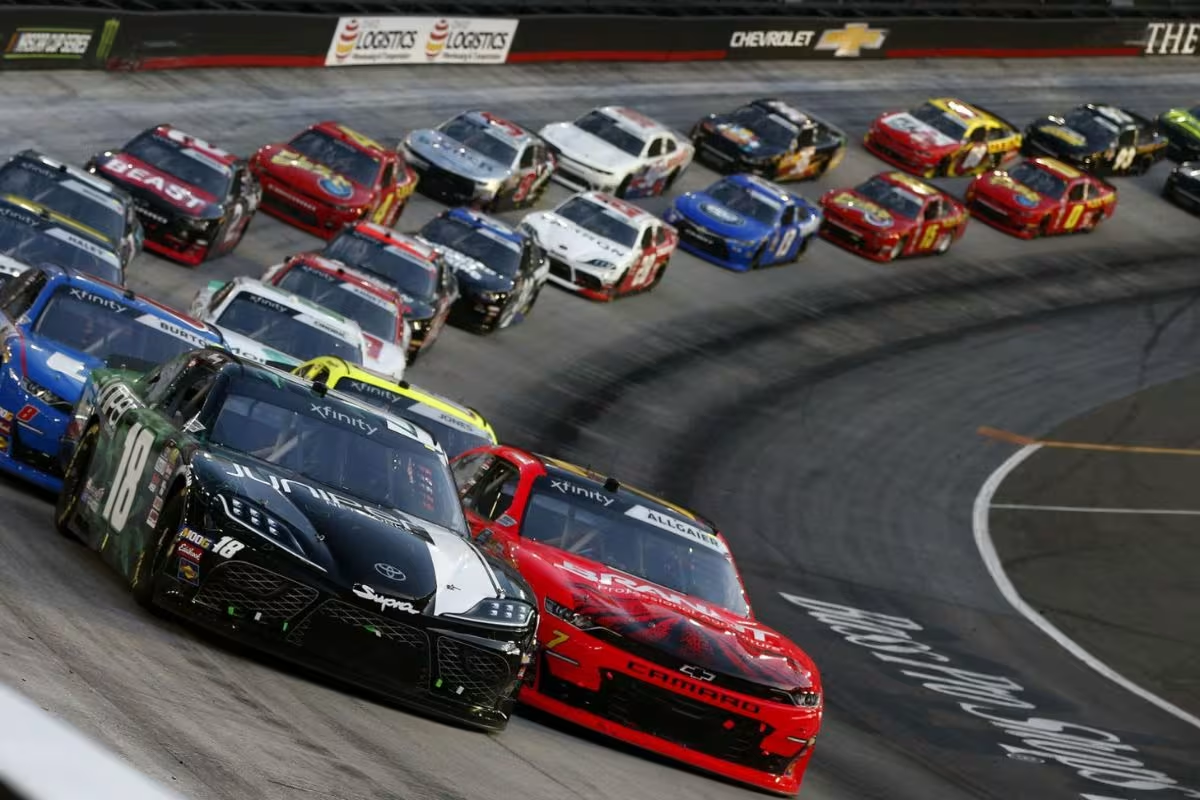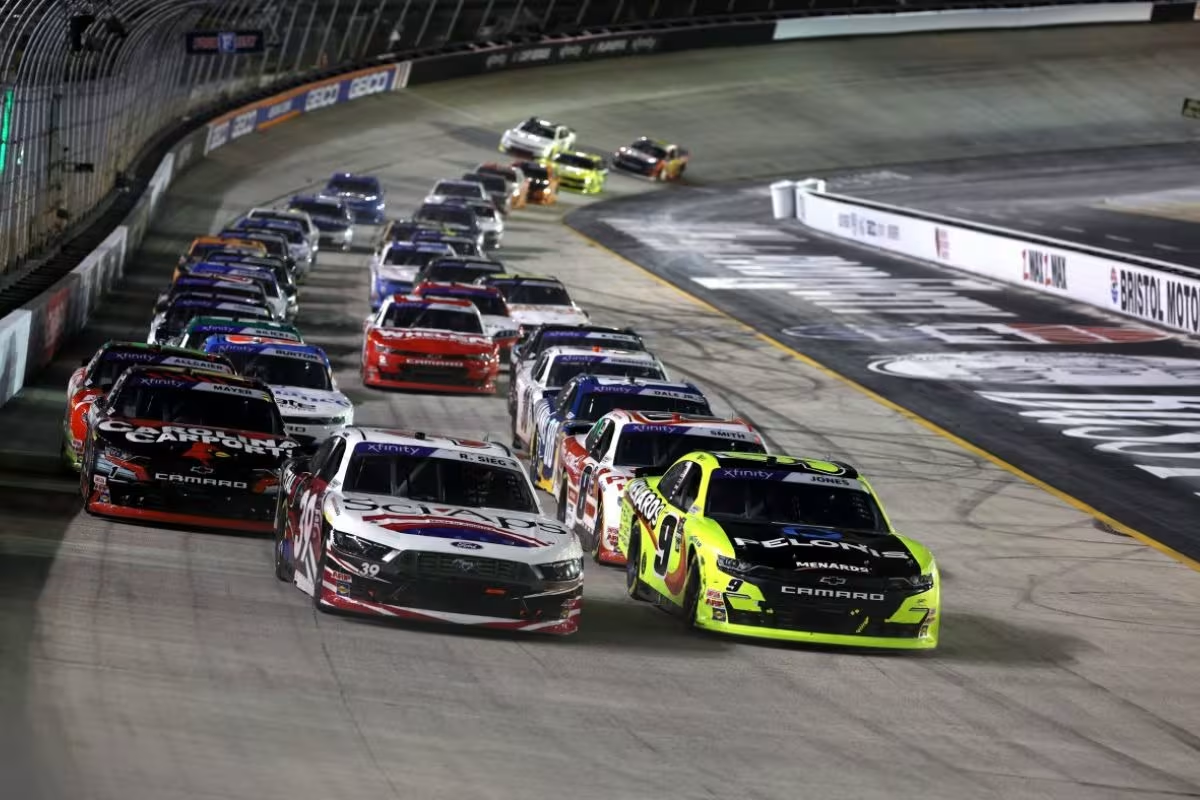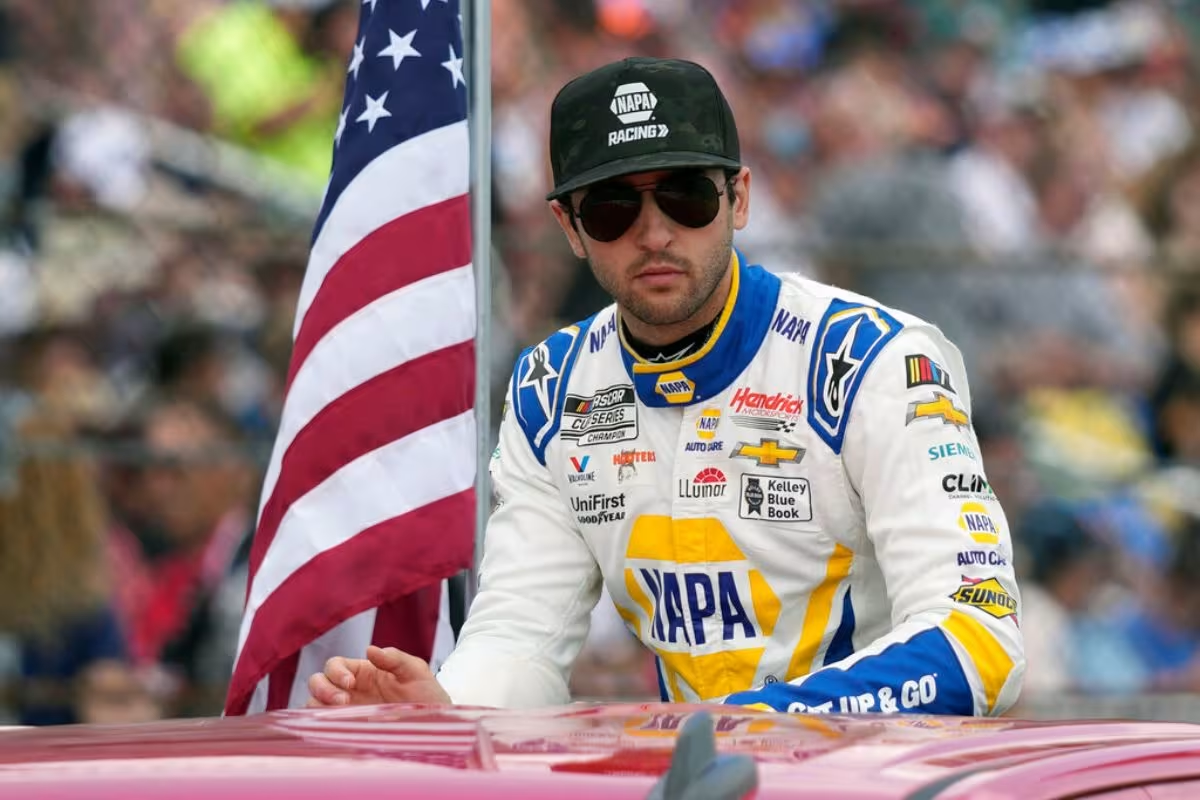Chase Elliott’s Unlucky Break at Talladega: The ‘Big One’ at Talladega Superspeedway highlights the track’s unpredictable nature. A recent multi-car crash changed the entire race, creating chaos at high speeds. In the 2024 YellaWood 500, 28 cars were caught in a spectacular wreck, showing the dangers of superspeedway racing. Chase Elliott faced his own dramatic twist during the race, leaving fans wondering what could have been. What really happened during this wild event?
Key Highlights
- Chase Elliott was involved in the significant wreck at the 2024 YellaWood 500, finishing 29th amid chaos.
- The wreck stemmed from a nudge between Austin Cindric and Brad Keselowski, triggering a multi-car incident.
- Elliott’s strategic positioning was disrupted by the unexpected collision, exemplifying the unpredictability of superspeedway racing.
- Only 31 cars finished the race, highlighting the severity of the incident and its impact on competitors.
- Elliott’s focus now shifts to improving his standings as he prepares for the challenges at the upcoming Charlotte Roval.
The Big One at Talladega
The notorious phenomenon known as the ‘Big One’ at Talladega Superspeedway is a defining characteristic of NASCAR racing, where the unpredictable nature of high-speed competition often culminates in a multi-car collisions. This 2.66-mile oval track, renowned for its high speeds and tightly packed racing, serves as a crucible for strategy, bravery, and sometimes, sheer misfortune.
The ‘Big One’ highlights the inherent risks that accompany the thrill of superspeedway racing, as drivers navigate the fine line between aggressive maneuvering and the perils of overzealous tactics. Historically, the ‘Big One’ has frequently reshaped the outcome of races, with its ability to involve numerous competitors in a single incident.
The 2024 YellaWood 500 exemplified this phenomenon, as 28 cars were caught in the most notable wreck in NASCAR history. This unprecedented level of destruction emphasizes the chaotic environment at Talladega, where the slightest miscalculation can trigger a chain reaction of calamity.
The mechanics behind these massive wrecks often stem from the close quarters in which drivers operate. At speeds exceeding 200 miles per hour, the margin for error diminishes rapidly. Additionally, the aerodynamic effects, such as drafting and side drafting, can lead to unexpected shifts in momentum, often resulting in disastrous outcomes.
Chase Elliott’s Experience During the Race
Amid the chaos of the ‘Big One,’ Chase Elliott’s race at Talladega Superspeedway took a dramatic turn that emphasized the unpredictable nature of superspeedway racing. Throughout much of the event, Elliott exhibited a keen sense of strategy, successfully positioning himself in a way that suggested he had a strong command over his race path.
Elliott shared his perspective post-race, reflecting on the promising partnership he had established with fellow driver Ricky. His insights highlighted the complexity of racing dynamics at Talladega:
“I was driving where I wanted to be. Thought Ricky and I had a really good system there going. I was really pleased with my spot and I thought I had a lot of what was going to transpire was really in my hands which is what I want at the end of these things. Unfortunately, that bit that was not in my hands ended up biting us but I don’t really know what to do about that. I was in a good position in the second half of the race, we were right there when it counted. I’m not sure how I got clipped, somebody barely clipped me.” – Elliott
- Strategic Positioning: Elliott felt confident in his spot and the system he had developed with his teammate.
- Control and Uncertainty: He believed he had a considerable degree of control over the race’s outcome until the unexpected occurred.
- The Nature of Superspeedway Racing: Despite his preparations, the unpredictability of superspeedway racing ultimately dictated a different outcome.
Chase Elliott on his race, where he felt he was in a good position in the wreck. pic.twitter.com/fkNOmNp3W3
— Bob Pockrass (@bobpockrass) October 6, 2024
The Incident Breakdown
Chase Elliott’s misfortune at Talladega stemmed from a crucial moment that unfolded with less than five laps remaining, demonstrating the chaotic nature of superspeedway racing. The race had been intensely competitive, with drivers navigating for position as they approached the final laps.
However, the situation escalated dramatically when Austin Cindric, who had led for a notable portion of the race, was nudged by Brad Keselowski’s No. 6 Ford Mustang ahead of Turn 3. This seemingly innocuous contact led to a catastrophic chain reaction.
As Cindric lost control, he collided with his own teammate, Joey Logano, igniting a massive wreck that ensnared several other contenders, including Elliott, Tyler Reddick, Alex Bowman, and Chase Briscoe. This incident emphasized the unpredictable and perilous nature of racing at Talladega, where a single miscalculation can have widespread repercussions.
Elliott’s 29th-place finish came as a bitter disappointment, particularly in a race where only 31 drivers managed to cross the finish line, emphasizing the severity of the wreck that day.
Chase Elliott’s Current Standings and Challenges Ahead
Maneuvering the complexities of the NASCAR playoffs requires not only skill but also tactical foresight, and Chase Elliott finds himself at a significant juncture in his campaign. Currently positioned just 13 points above the elimination cutline, Elliott occupies the unstable last playoff spot, with Joey Logano closely tailing him in ninth. This narrow margin highlights the urgency of his upcoming performances as he heads into the Bank of America ROVAL 400.
The Charlotte Roval presents a unique blend of challenges that Elliott must adeptly navigate to advance his title hopes. While his ninth-place finish at this track last year serves as a glimmer of hope, it is imperative that he builds upon that experience and capitalizes on the following factors:
- Adaptability: Shifting between road course and oval racing requires swift adjustments in strategy and driving style.
- Consistency: Maintaining steady performance across the race is critical to avoid costly mistakes.
- Qualifying Position: Starting strong can provide a tactical advantage in managing track position throughout the race.
Elliott’s Approach to the Newly Repaved Charlotte Roval
With the pressure mounting as he approaches the Charlotte Roval, Elliott is acutely aware of the need to adapt to the newly resurfaced sections of the track. The 2.28-mile circuit, recently overhauled between Turns 6 and 7, presents both challenges and opportunities.
Elliott recognizes the importance of treating this section as a new racetrack, one that will greatly alter the flow of his lap times. His tactical preparation includes utilizing simulation technology to familiarize himself with the new surface characteristics, ensuring he is not caught off guard during the race.
Elliott’s experience on the Roval is substantial; however, the recent changes necessitate a fresh approach. The following table highlights his performance metrics and anticipated strategies:
In his own words, Elliott stated, “I’ve been kind of approaching it as a new track in my prep.” This mindset is critical, especially given the limited practice time available.
“To me, I kind of look at it as a new race track truthfully, and that section of the track is going to change the entire flow of a lap there. So, I’ve been kind of approaching it as a new track in my prep. Have some time at sim and just trying to really just memorize the track and what little bumps are here or where or what typically those track scans are. That’s probably one of the best things about sim that a driver can go and get familiar with is the track layout, the surface content, roughness, and so on.” – Elliott
News in Brief: Chase Elliott’s Unlucky Break at Talladega
The incident involving Chase Elliott at Talladega emphasizes the unpredictable nature of restrictor plate racing and the inherent risks associated with aggressive strategy decisions. As the “Big One” unfolded, it brought to light the delicate balance between positioning for success and the potential for catastrophic outcomes. Moving forward, Elliott faces considerable challenges, particularly with the upcoming race at the newly repaved Charlotte Roval, where adjustment to track conditions and tactical planning will be essential for competitive performance.
ALSO READ: Chase Elliott’s Honest Thoughts on Tony Stewart’s Leadership Style and Challenges



